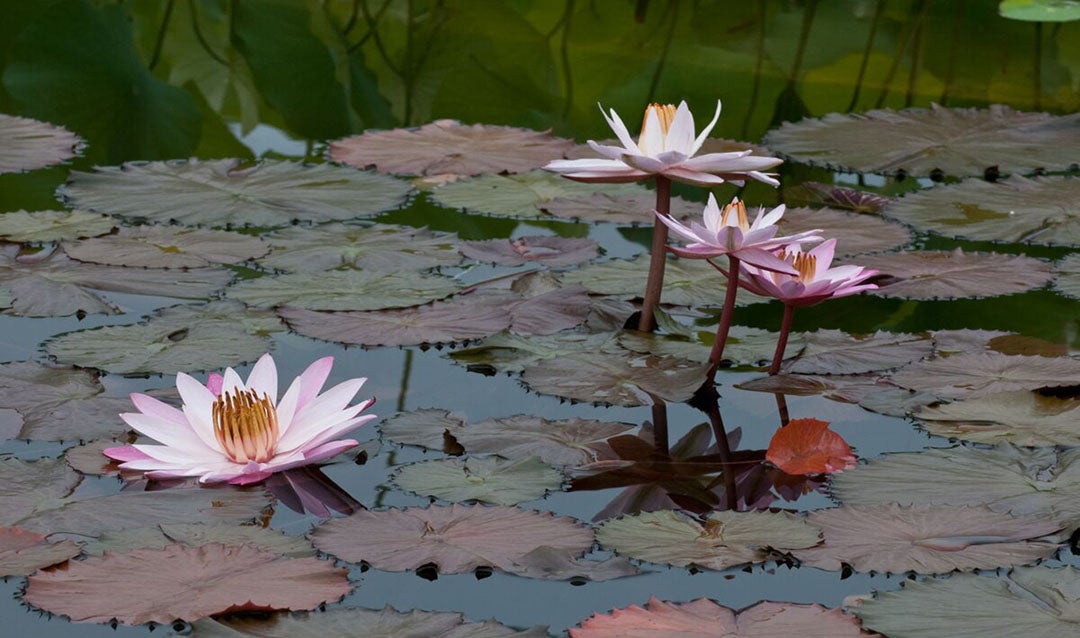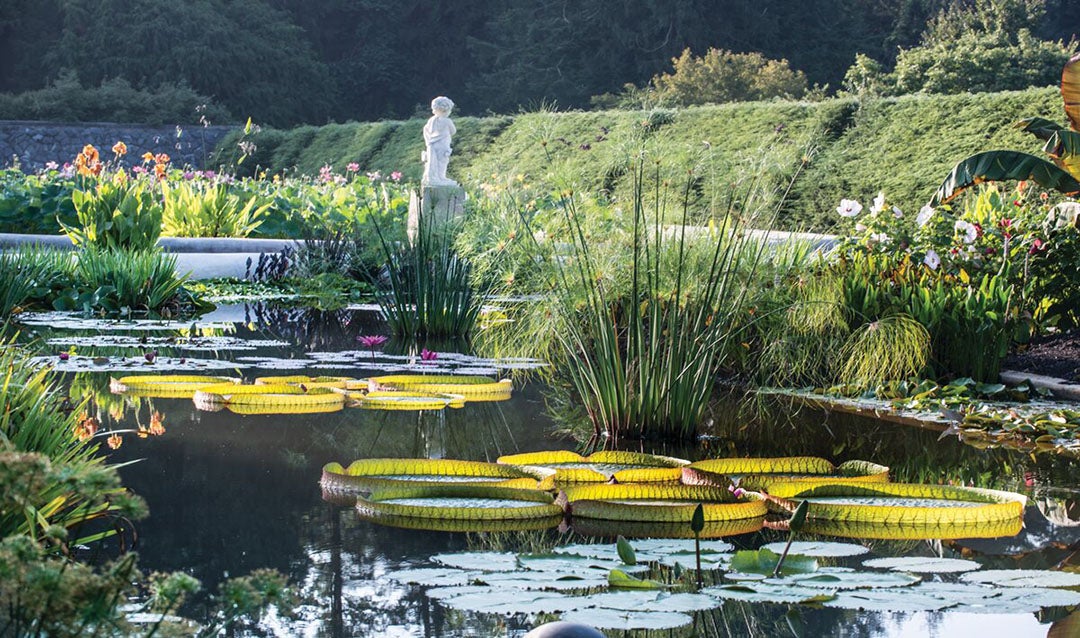Filled with numerous varieties of exotic water lilies, tropical bananas, papyrus, and koi fish, the Italian Garden pays tribute to George Vanderbilt and Fredrick Law Olmsted’s vision each year. Although it’s is one of the most visited areas on the estate, many guests do not realize this special garden is astoundingly accurate to Fredrick Law Olmsted’s original design in 1895.
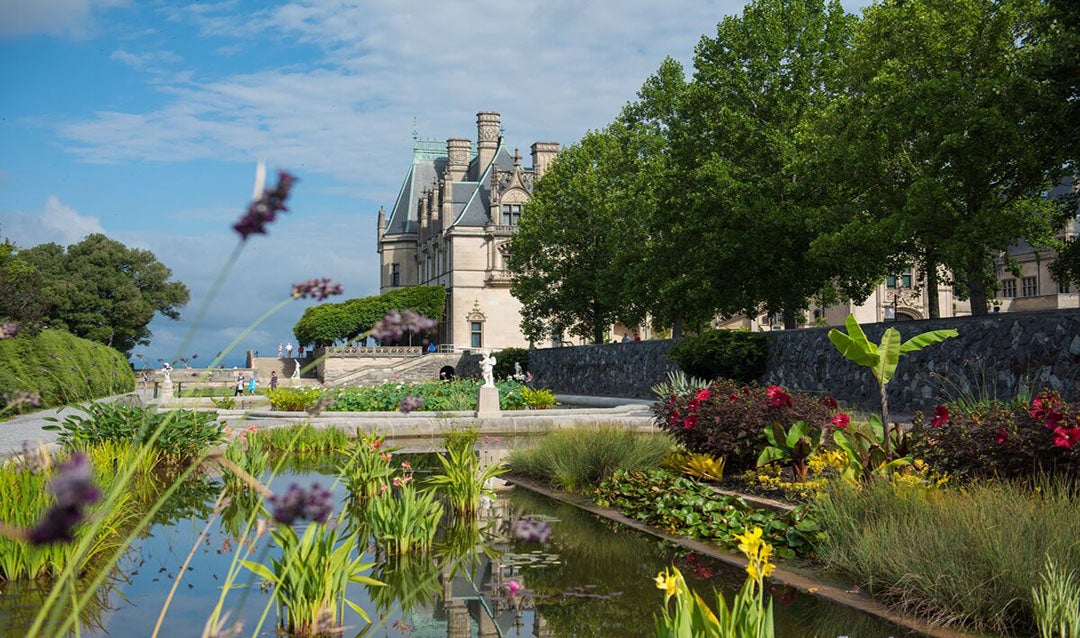
Century-Old Traditions
In early spring, Biltmore Gardeners Charles Cissell and Steven Ayres strategically choose which lilies they will order from Tricker’s Water Gardens – the very same supplier that Olmsted used in 1895. The William Tricker Company was one of the first commercial water lily growers in the United States, experimenting with growing and hybridizing water lilies to improve the shape, colors and hardiness. Olmsted’s keen eye took note of these unique beauties and deemed them a perfect fit for Biltmore, an idea that still rings true today.
From planting, to grooming, to cleaning, the Italian Gardens require extensive maintenance. “We plant each lily in a 45-gallon nursery pot with a mixture of clay and manure. Then we use a Bobcat to lift each plant into the pool,” recalls Cissell, a process that is no doubt far easier than in 1895. Although “plant metabolism” is a foreign term to most aquatic plant novices, Cissell notes that, “Lilies are heavy feeders. We fertilize once a week and groom three times a week throughout the season, usually June to October. Grooming is especially important because the more pollinated blooms you remove, the more new blooms it will produce,” says Cissell, who has spent the last four of his seven years with Biltmore dedicated to the Italian Garden.
In addition to the lilies themselves being originally-sourced from Tricker’s, the pool filtration features the original 1895 technology as well. “It’s a natural system with constant water flowing into and out of the pools. The original gravity-fed reservoir provides the water for the pools, which also used to provide water to the house,” says Cissell. This natural filtration is especially beneficial to the dozens of koi swimming about – one of which Cissell says is close to 50 years old!
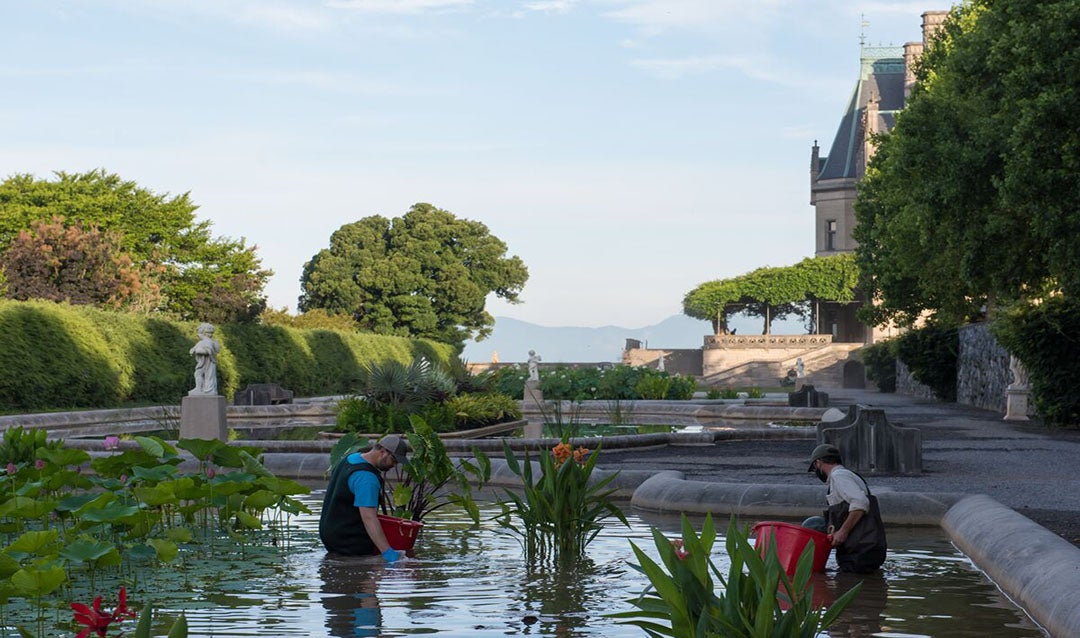
Magical Lilies of the Italian Garden
Each year, Cissell gets excited to see the new hybrids and cross-varieties that Tricker’s Water Gardens offers. He orders many of the exact plants featured in 1895, but now with new colors and hardier blooms that Tricker’s has cultivated over the years. Each pool is strategically planned and includes several varieties of night-blooming lilies, the distinct Victoria Water Platters, hardy lilies, and various banana trees and shrubs to add texture and depth.
Each lily variety works together to provide an unforgettable experience, no matter what day or time a guest visits. Night-blooming lilies reach their peak bloom in the early morning and will be completely closed by noon, while day-bloomers will open in the morning and carry into the early evening. Though each plant is expected to show between three to nine blooms at a time, Cissell notes that many guests don’t realize that lily blooms only last for three days, and he describes the bloom process as being “sort of magical.”
Hardy lilies typically have standard colors like red, white, yellow, and pink while tropical lilies produce vibrant blues, purples and even combinations of color. “One of my favorites is Nymphaea ‘Green Smoke’ which transitions from green outer petals to blue, then yellow inner petals to finally having light purple in its center,” says Cissell. And in the case of the large Victoria Water Platters, he notes that these lily blooms can even change colors. “The Victoria is hermaphroditic – when it blooms, it changes from female to male overnight. Beetles are attracted to this flower’s warmth, and as the bloom closes, it traps the beetles inside and forces them to pollinate the flower. The new bloom will change from white to a pink or maroon the next night.”
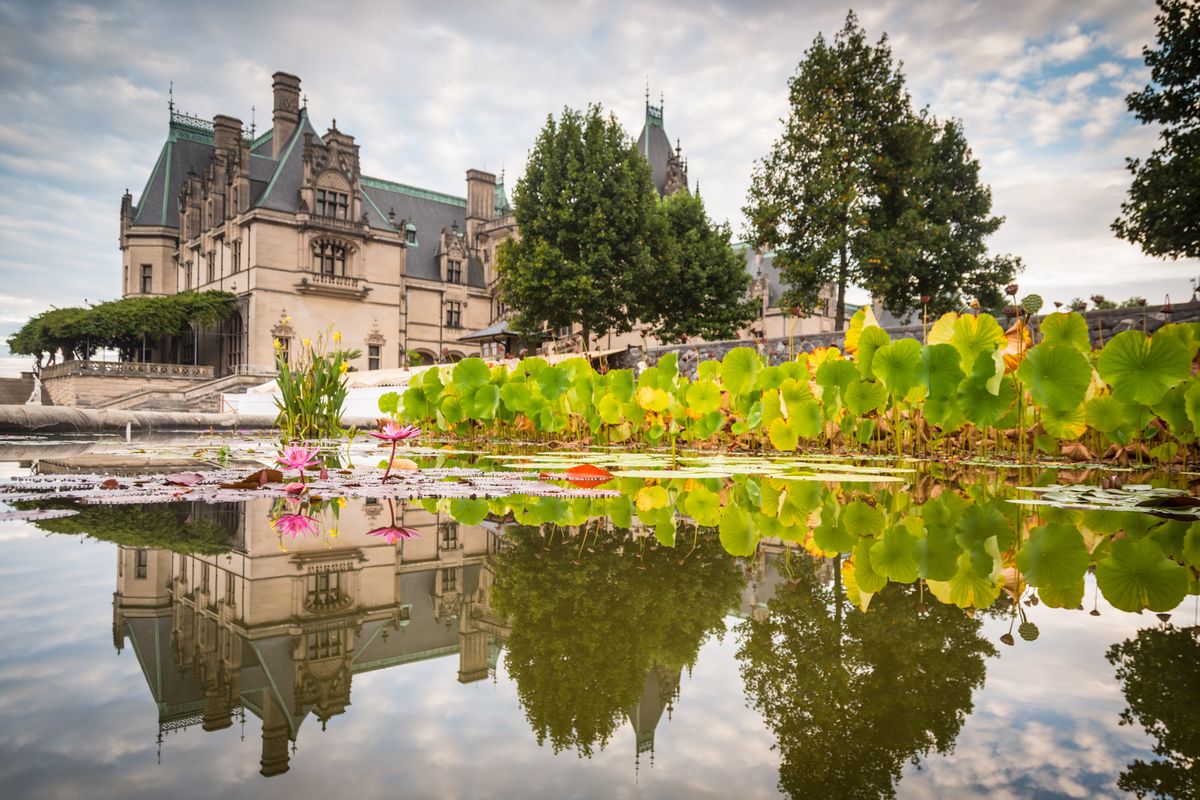
Uniquely Biltmore
In 2014, the Italian Garden closely resembles original outline by Olmsted, with Cissell saying the only main difference being the center bed display. “I use a more contemporary garden design with banana trees and elephant ears. Also, due to the sheer amount of lily varieties available now, we’re able to create a mosaic effect out of the different colors they would not have had back then,” says Cissell.
The Italian Garden serves as an introduction to aquatic gardening for many Biltmore guests, as water gardens are not something often seen. It draws thousands of admirers each spring and summer, and Cissell says the garden has even inspired a few to create their own water garden at home. Parker Andes, Director of Horticulture at Biltmore says, “This is world-class. This water garden is as good as you’re going to see pretty much anywhere in the United States, but it’s a bit different. It’s uniquely Biltmore.”





